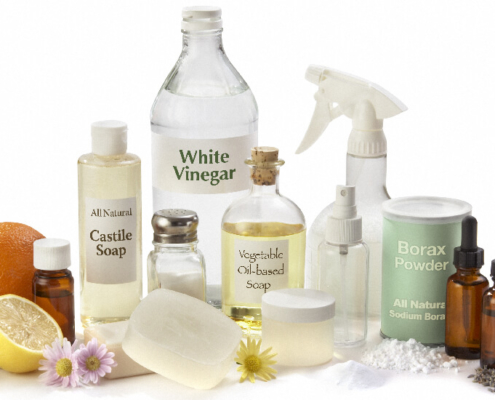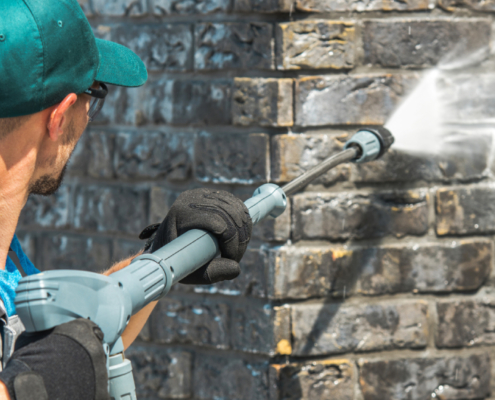Germ Threat Areas – Identify and Destroy!
When it comes to keeping the house clean and comfortable, it’s important to remove bacteria and germs that are present to protect your health and well-being. Although most people have an idea of where to clean throughout the space, there are still plenty of areas where germs thrive. It’s important to learn how to identify the germiest spots in your home and how to properly clean each spot.
The Most Germy Spots in Your Home
Most people think of the toilet or the floor when they think of where germs are most present in the home, but there are other areas where germs can hide. Germs are known to thrive in kitchens due to the amount of food that is handled in the setting. Studies show that 75 percent of dish rags and sponges that are used for scrubbing dishes or the countertops can contain e.coli and salmonella. The area can even be contaminated with fecal matter. The germs can easily spread in the room when they’re used to wipe down appliances, the stovetop, and the kitchen island.
The kitchen sink is an additional offender that contains an average of 31,905 average normalized microorganisms per 10 square centimeters, with salmonella and e. Coli also present in 45 percent of sinks. The countertop sits nearby and also attracts germs because of how much it’s used each day. Studies show that 30 percent of countertops have coliform present due to different food items that are prepared like raw meat, poultry, and unwashed produce. Coliform can also form due to unwashed hands after touching pets in the house or their toys.
Many people don’t realize how dirty electronics are and how many germs are often present. From the remote control to the stereo system, electronics are often used on a daily basis but are rarely wiped down. Computer keyboards can also contain thousands of bacteria and may be just as dirty as the kitchen sponge.
The carpet that is used throughout the home is an additional area where plenty of bacteria and germs are present. Most people spend time outside of the home each day, whether in an office, at the store, or school. All of the germs that are picked up in other settings are easy to track into the building. There could be as many as 200,000 bacteria per square inch with MRSA, E. coli, and salmonella present in the fibers of the carpet. The carpet can also harbor pet dander, allergens, and skin cells.
Although towels are only used for drying off after bathing, they’re an additional area where germs are present. Bath towels can form germs when they stay wet for more than 20 minutes, with MRSA present on up to 18 percent of bath towels in homes. Rashes, allergies, and infections can form for those who come in contact with the bacteria.
Nearby, the bathtub is also a germy area due to standing water that sits for too long after bathing, which can cause mold and fungi to form. In some cases, staph may even be present and can pose a health risk.
How Often You Should Clean These Places
Sponges and rags that are used frequently should be cleaned in the microwave each day and tossed out every week or two. The kitchen sink should be cleaned at least once each week to avoid cross-contamination or food poisoning. Throw the kitchen strainer in the dishwasher once each week.
Keeping the countertops germ-free means wiping them down once each day. Electronics can be cleaned once every week or two, depending on how frequently they’re used by residents in the home.
Clean the carpet by vacuuming weekly and steam-clean the material every six months.
When it comes to cleaning the bath, disinfect it with bleach, hydrogen peroxide, or an anti-bacterial product three times each week.
How to Properly Clean Them
It’s important to keep the sponge or rag clean each day by placing it in the microwave for two minutes. The sponge can even be placed in the washing machine with bleach. Dishrags and cloths can also harbor fewer germs compared to sponges and are a better option with wiping surfaces down.
The kitchen sink should be disinfected with bleach or an anti-bacterial cleaning product. The kitchen strainer also needs to be placed in the dishwasher. The drain and disposal also need a bit of attention, with a cleaning solution of one teaspoon of bleach and one quart of hot water that is poured down the drain.
The countertops in the kitchen should be washed daily to ensure that they’re a safe area to prep food and to avoid contaminating anything that is consumed. Use hot soapy water and follow with a bleach solution to kill all germs and bacteria.
Cleaning your electronics is possible by using disinfecting wipes that won’t cause damage to the products. Avoid using water or spraying a cleaning agent on the mouses or tablets, which can cause them to malfunction when having contact with moisture. A scratch-free cleaning product should also be used on the television, tablets, and computer screens.
Although the carpet can be extremely dirty, it’s easy to clean. Vacuum the carpet each week with a vacuum that has a HEPA filter to prevent debris and dirt from recirculating back into the home. The beater brush should also be turned on. Follow by spraying the surface with a sanitizing product that kills all germs. Steam-cleaning the carpet is also necessary to deep clean the fibers and remove bacteria. You can also avoid wearing shoes in the house to limit the number of germs that are tracked into the building and create a more sanitary environment.
Bath towels can stay cleaner by hanging them on a towel rack rather than a hook. Open up the windows to remove the moisture in the air after bathing. They should be washed after every three or four uses in hot water.
Proper cleaning of the bath requires thoroughly drying off the tub after each use to prevent bacteria from growing. The tub also needs to be disinfected to protect your health when taking a bath.






